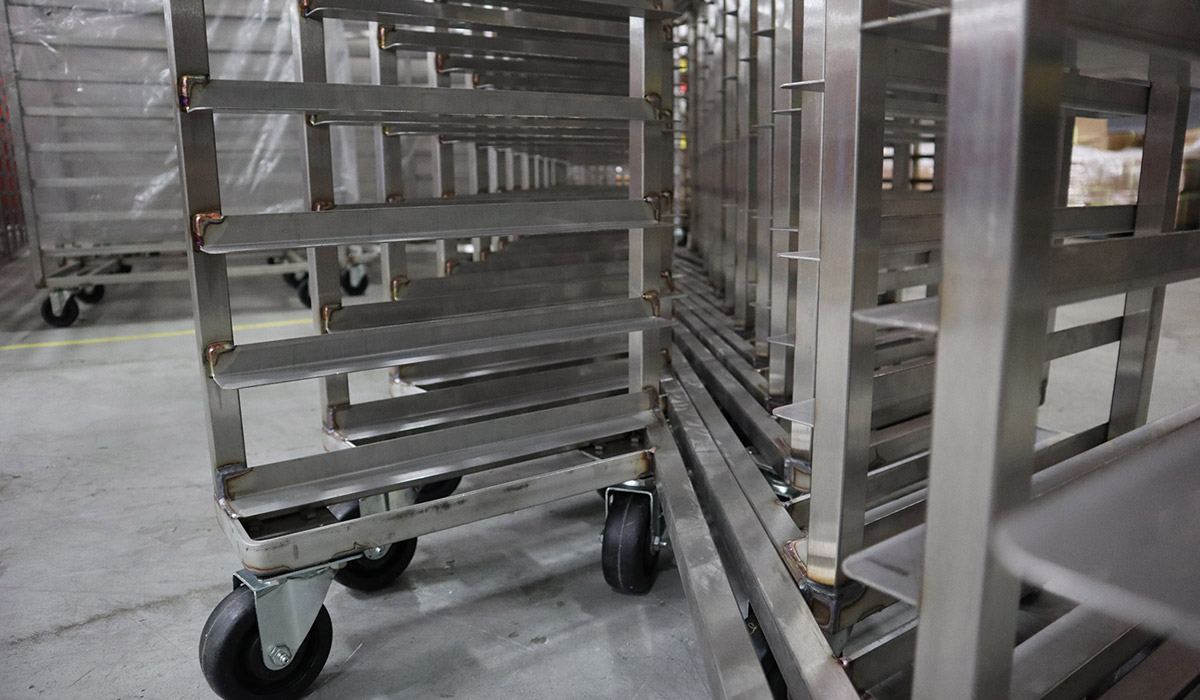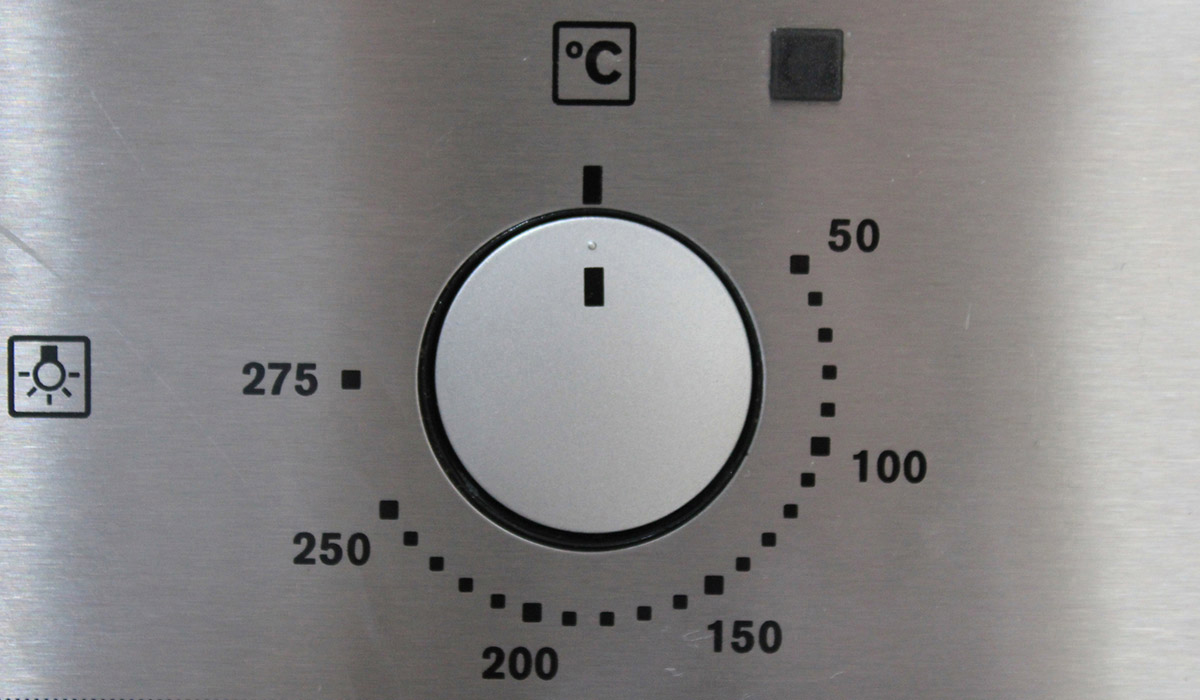
Do nesting racks compromise rack durability? Will my nesting rack offer less strength and durability compared to a standard pan rack or oven rack? Here at Schaumburg Specialties, our sales team regularly face the questions from prospective buyers – particularly in the commercial bakery and food production sectors. In our latest blog, we answer this question once and for all. Keep reading to learn more!
If you’re outfitting a commissary-style kitchen or food production environment with racks, carts, trolleys and other storage & transportation equipment, it’s highly likely that you’ve browsed nesting racks. Often referred to as ‘nested racks’ and chosen for their space-saving features these food production essentials are used to store food products efficiently where space is limited.
How Nesting Racks Affect Rack Durability
Nesting racks are easily arranged thanks to their unique design, allowing units to effectively ‘slot in’ to one another, making huge savings on floor space. But does this design compare in strength to that of a conventional rack? And if so – how?
Put simply, the answer is yes: nesting racks will, in fact, compromise the durability of your product. Here’s just a few reasons why this is inevitable…
1. Nestability Must Sacrifice on Strength

By choosing a product that features a nestable design, losing some structural strength is unavoidable – it’s just a matter of physics. Unlike a conventional pan or oven rack, nesting racks sacrifice on many strengthening design features.
Nesting racks succeed due to their opposing corners – two corners are attached and two are unattached, as seen in our photograph above. This is where the compromise on durability comes in. Due to the fact pressure is exerted upon one point as opposed to being spread out like in normal racks, your nesting rack will have to work harder. In food production environments where space is constrained, this is a compromise that many businesses are willing to make.
That isn’t the only design feature that lessens the durability of a nesting rack in comparison to a conventional rack. With conventional racks, the middle of the product is supported by a welded tube which acts as a tie bar that holds the two sides securely in place. Since nesting racks need to slot in with each other, this supportive feature is absent.
Put simply, with a nesting rack, your welded connection points are reduced: a necessary compromise for compact storage!
2. Nesting Rack Mobility Can Present a Durability Challenge

It’s true: after months (or years) of moving your nesting rack around your busy commissary-style kitchen or food production environment, you could well encounter mobility issues that will combine to compromise the durability of your rack. From maintaining flatness and stability on the ground, right through to the breakdown of casters and the effects of moving your rack into an oven, there’s a few things to bear in mind:
Flatness and stability: The durability of stability of your nesting rack will largely depend on how well – or poorly – it can grip the ground. Because a nesting rack isn’t a perfectly symmetrical object (few things are, after all), pressure can be exerted on one area for an extended period of time. This can sometimes lead to that frustrating problem where one wheel becomes raised off the ground.
Caster durability: The vast majority of racks, carts, trolleys and pan dollies will be constructed using either stem casters or plate casters. Conventional racks will often utilize a plate caster, which is the far more durable option. However, nesting racks are made using plate casters which are supported by the inclusion of a cantilevered structure. Fundamentally, casters are a major hotspot for wear and tear, and you should prepare to encounter these common maintenance issues after heavy use.
Often nesting racks do not have the integrity or the same capacity of a conventional rack, resulting in a sway when the rack is loaded. It means that when the rack moves by pushing on the side or end, the top of the rack begins to move before the bottom of the rack where the wheels are supporting the entire load. The rack is not intended to flex in this manner, resulting in the premature failure of the materials and joining methods.
3. Heat Distortion Can Take Its Toll

When you weld two pieces of metal, you have a heat-affected zone causing slight distortion. In the construction of a baking rack or oven rack there are many welds that result in a larger amount of distortion, resulting in warping or bowing which is harder to control in a nesting rack.
Nesting Racks: Find the Perfect Product For Your Business
Yes – nesting racks inevitably sacrifice on durability so that they can perform as designed. However, these are essentials in any commissary kitchen or food production environment where floor space is a precious commodity. To find the perfect nesting rack for your business, browse our SHOPCraft selection or contact us to discuss your unique spatial, budgetary and operational requirements. Alternatively, visit our Learning Center for more info.